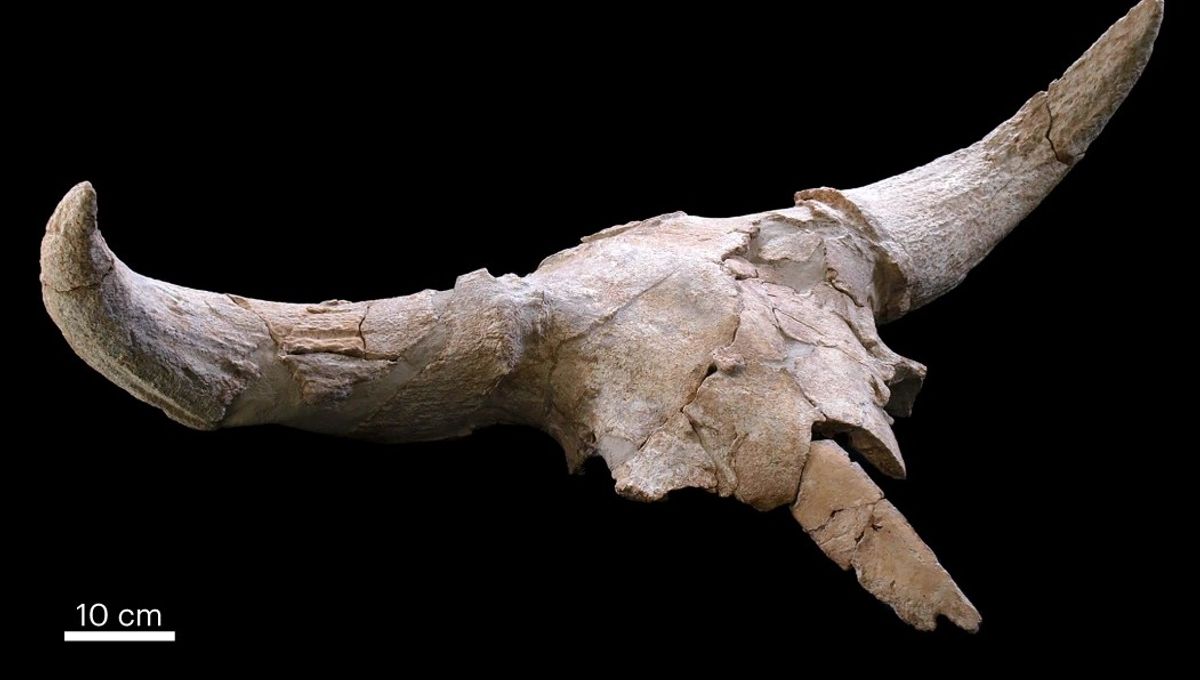
The Neanderthal occupants of a cave in central Spain had a pretty unusual tradition that seems to have been passed down through multiple generations and may have persisted for thousands of years. Filling their cavernous home with the skulls of large, horned animals, these prehistoric hominids are thought to have used the crania for some sort of symbolic purpose, although researchers are at a loss to describe what this might have been.
Referred to as the Des-Cubierta Cave, the site is the only Neanderthal dwelling known to contain a stash of skulls. What’s even more peculiar is that the cave contains no other animal bones, suggesting that butchery did not take place here and only the heads were brought inside.
The skulls have therefore been interpreted as evidence for symbolic behavior and abstract thought among Neanderthals, adding to an increasing body of work that suggests that our extinct relatives were capable of far more than just utilitarian tasks. For instance, the presence of a ceremonial structure in a Neanderthal cave in France, along with ancient artworks found elsewhere, have all helped to transform our understanding of what these robust humans got up to in their spare time.
Given that all of the crania at Des-Cubierta have fully intact horns, researchers have previously speculated that they may have been stored in the cave as hunting trophies. Alternatively, however, the animal remains might have been used in esoteric rituals, initiation rites, or magical practices.
To learn more about how the skulls were collected, the authors of a new study conducted a detailed stratigraphic analysis of the cave, revealing 12 lithostratigraphic units going back 300,000 to 400,000 years. The oldest of these show no evidence of human occupation, although it is in Unit Three that things start to get interesting.
Within this layer, the researchers found a number of Mousterian stone tools – representing a lithic industry associated with Neanderthals – as well as some Neanderthal teeth. They also came across 35 horned skulls belonging to bison, deer, and huge extinct species such as aurochs and steppe rhinoceroses.
Based on the sedimentological composition of Unit Three, along with the types of pollen and small fossils present within this layer, the study authors conclude that the skulls were collected during a cold climatic phase that lasted from around 71,000 to 57,000 years ago. That’s not to say that the cave was occupied for this entire period, although there is evidence to suggest that Neanderthals were depositing animal crania over many years.
For instance, the skulls were scattered throughout several layers of rockfall and sediment build-up, indicating that the tradition was “prolonged and multiphasic.” This, the authors say, “would suggest that the Neanderthal symbolic practices were not isolated incidents, but behaviours maintained and transmitted across multiple generations.”
Previously, it has been posited that the cultural phenomenon of skull collecting at Des-Cubierta Cave may have existed for decades, centuries, or even millennia. For now though, the exact chronology of this odd habit remains unknown, as does the reason behind the morbid stash.
The study has been published in the Journal of Quaternary Science.
Source Link: This Neanderthal Skull Cave Was Used To Stash Heads For Generations